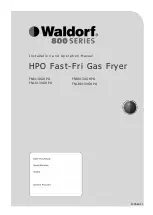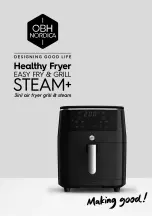
16
505828
FOpF©amV
Energy Saving Tips
• Make sure the lint filter is always clean.
• Do not overload the dryer.
• Do not overdry items.
• Remove items to be ironed while still damp.
• Use the correct cycle for the type of fabric being
dried.
• Do not open the door during the drying cycle.
• Plan to do your laundry on low humidity days; your
clothes will dry faster.
• Dry multiple loads of clothes one right after another
so dryer interior does not have to be reheated for
each load.
Helps and Hints
• The necessary suggestions and directions for
installation and proper exhausting are given in
the beginning of this manual.
• Static electricity may cause garments of synthetic
fibers (as in lingerie) to cling together, especially if
they are overdried. The use of a fabric softener will
soften clothes and reduce static electricity.
• Do not wash or dry clothes that shed lint in the same
load with permanent press or knit garments.
• Remove permanent press loads immediately after
dryer stops.
• Follow the care labels on FLAME RETARDANT,
SCOTCH-GUARD™, etc., garments for the proper
washing and drying.
• If loads should be damp for ironing, turn timer knob
to the ENERGY SAVER setting, marked with a dot
(
•
), in Automatic or Time Dry cycles.
Load
Do not overload your dryer. Bulk, not weight,
determines the load size. There should be space in the
dryer for the clothes to tumble freely. Large and small
pieces together make up loads which will tumble well.
Permanent press loads should be smaller to provide
room for tumbling. The following illustrations show
the ideal load sizes for fabrics.
To reduce the risk of fire, explosion, serious
injury or death, clothes which have traces of
any flammable substances such as cooking
oil, machine oil, flammable chemicals,
thinner, etc. must not be put into the dryer.
W131
WARNING
D322IE1A
Cylinder with wet
cottons and linens
D323IE1C
Cylinder with wet
permanent press









































